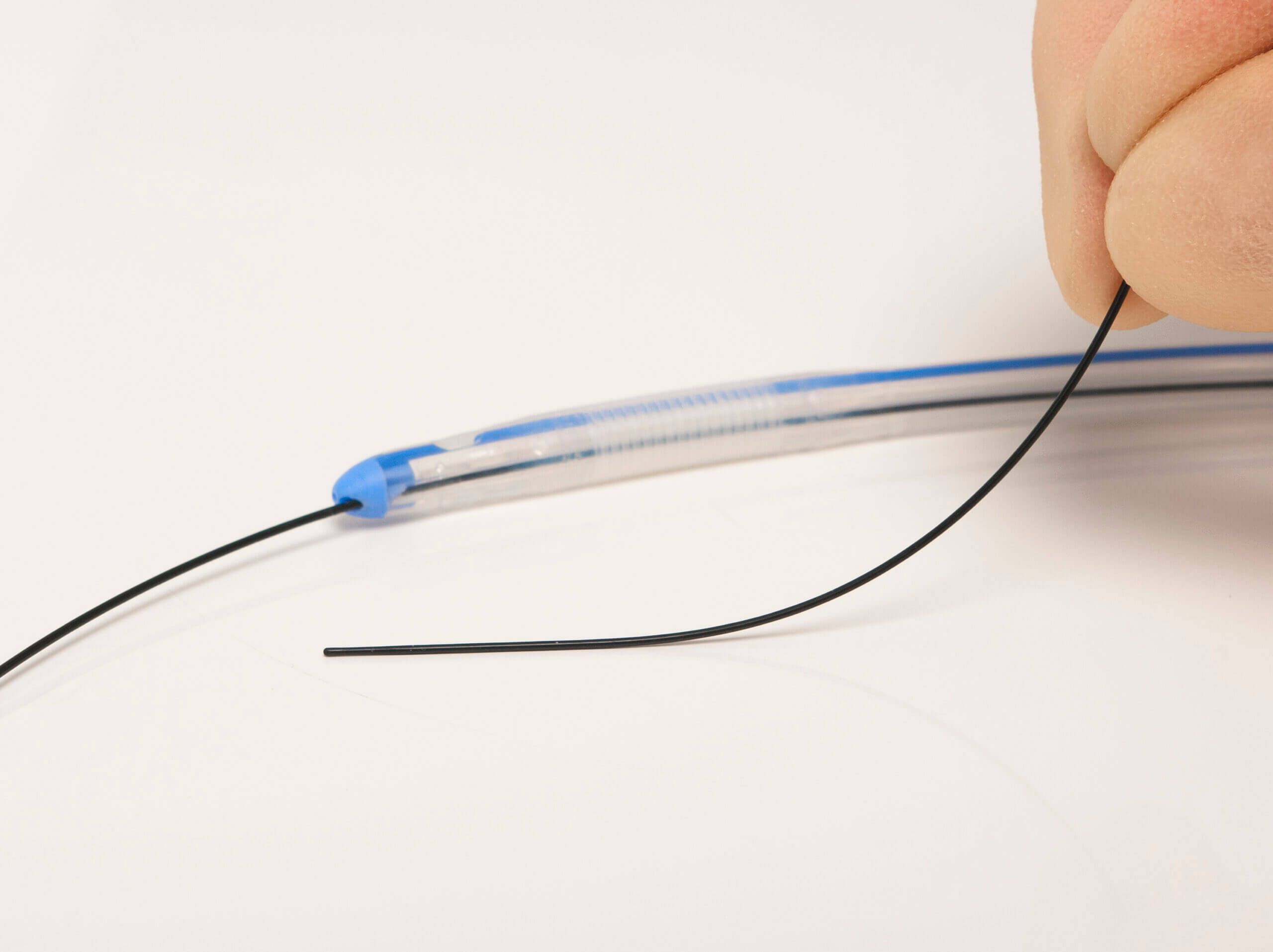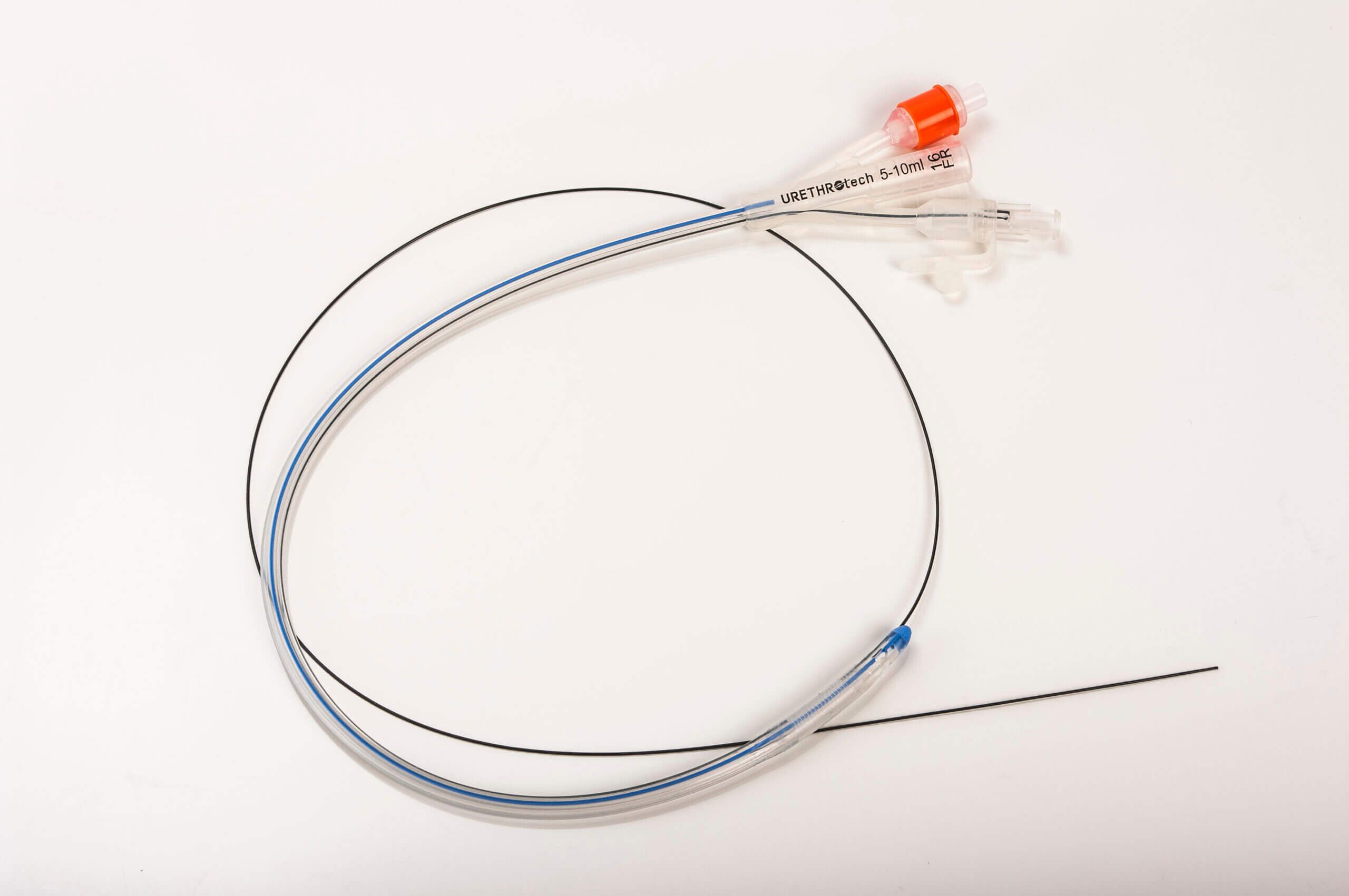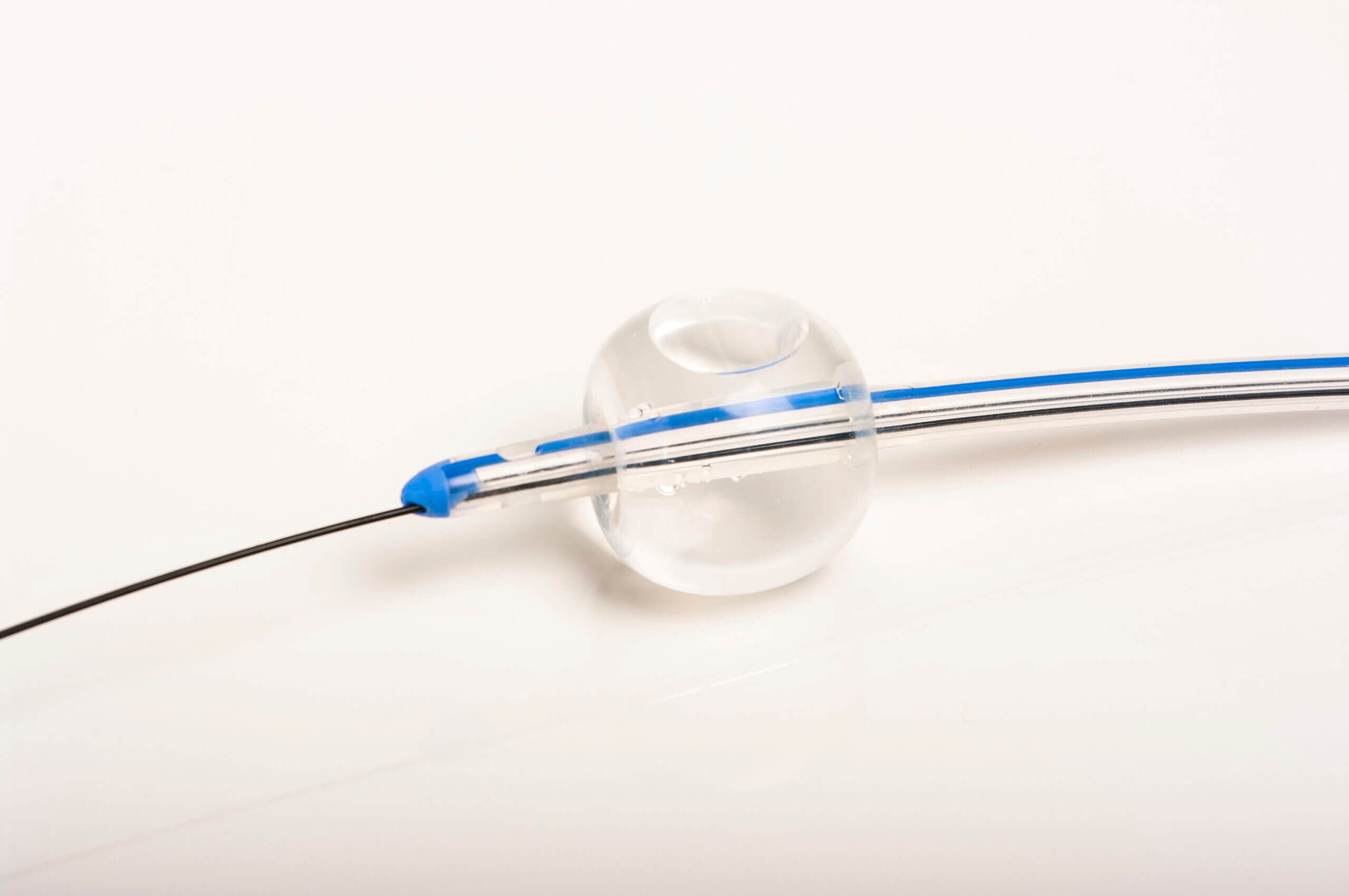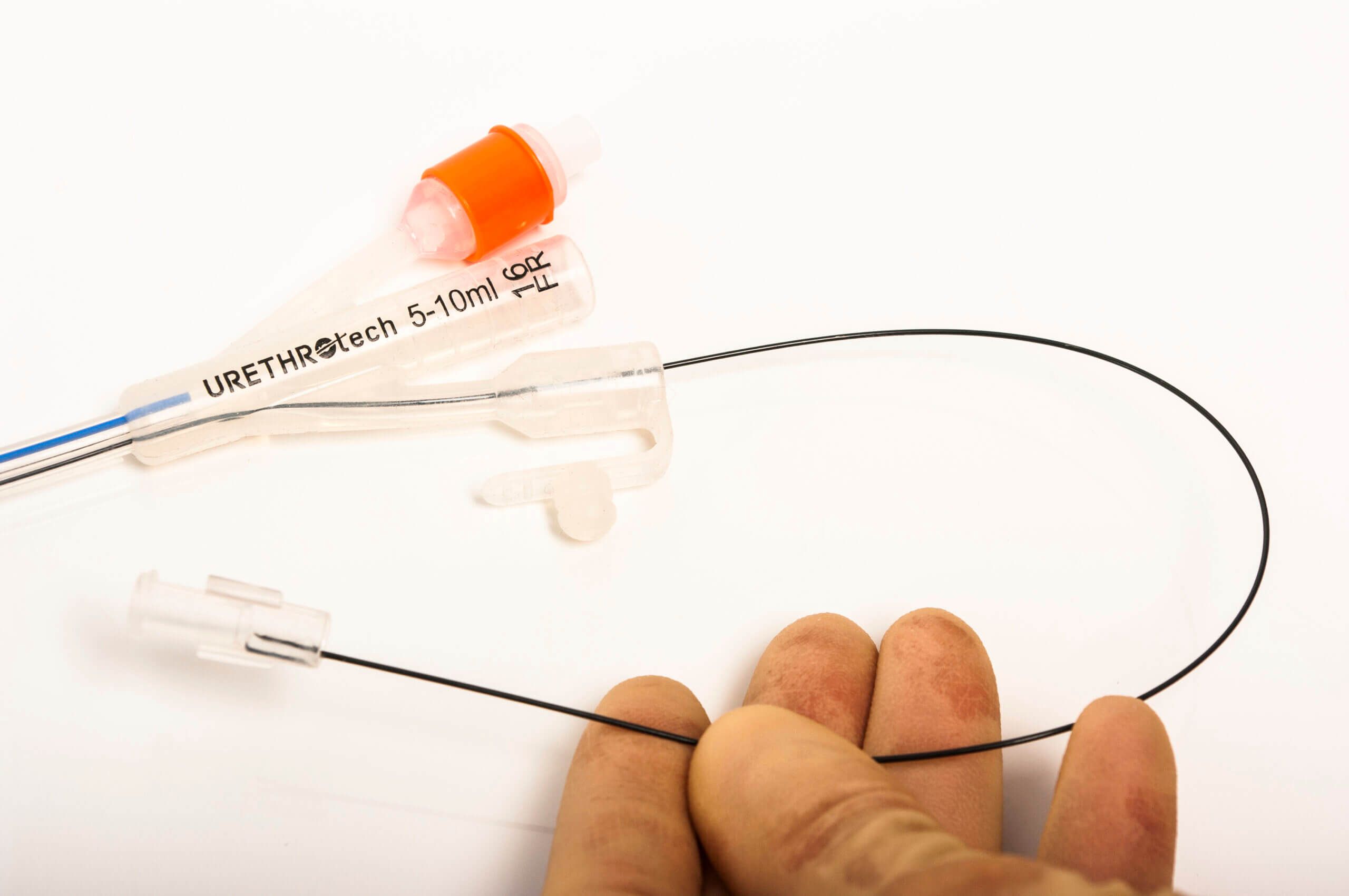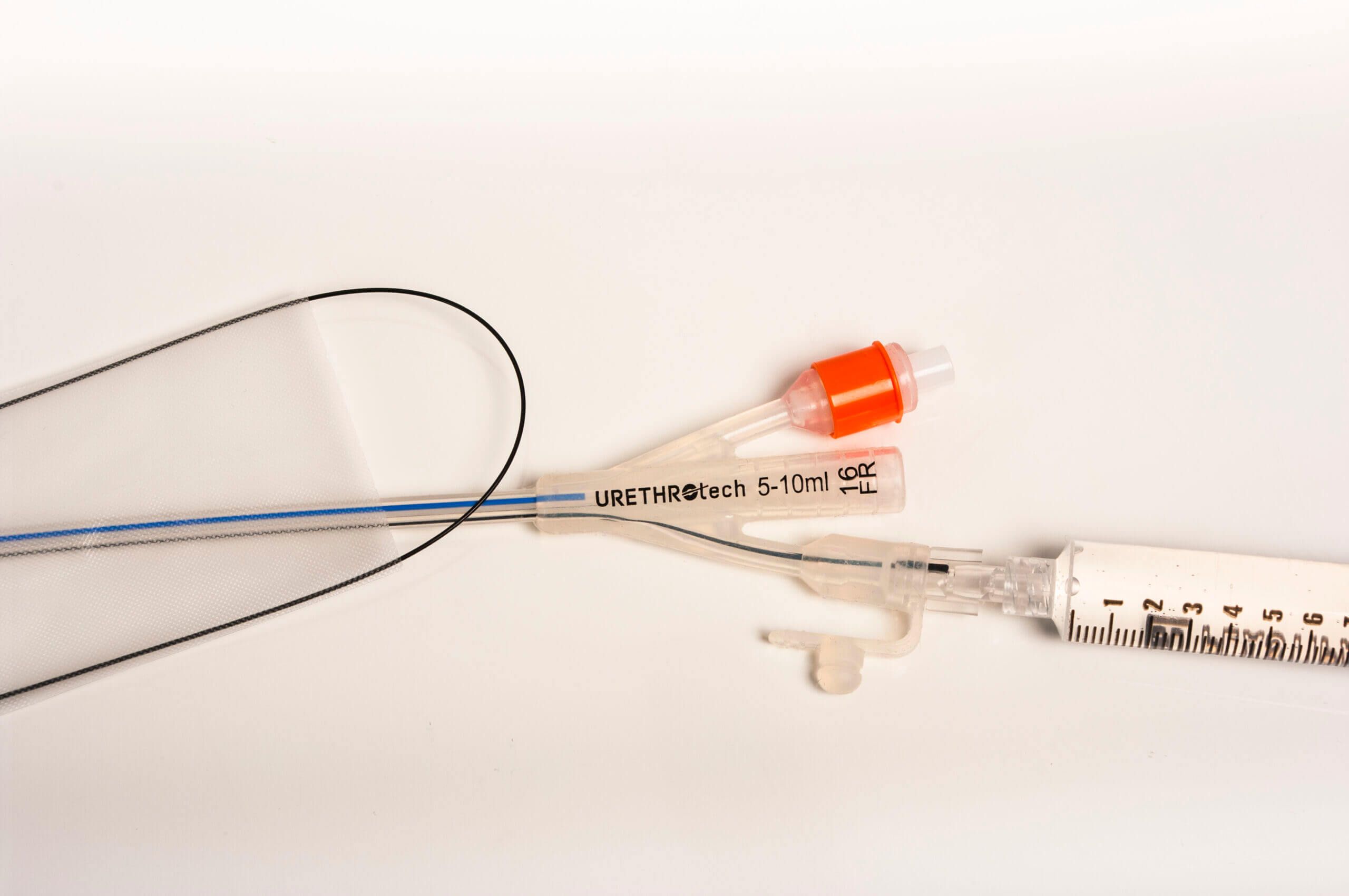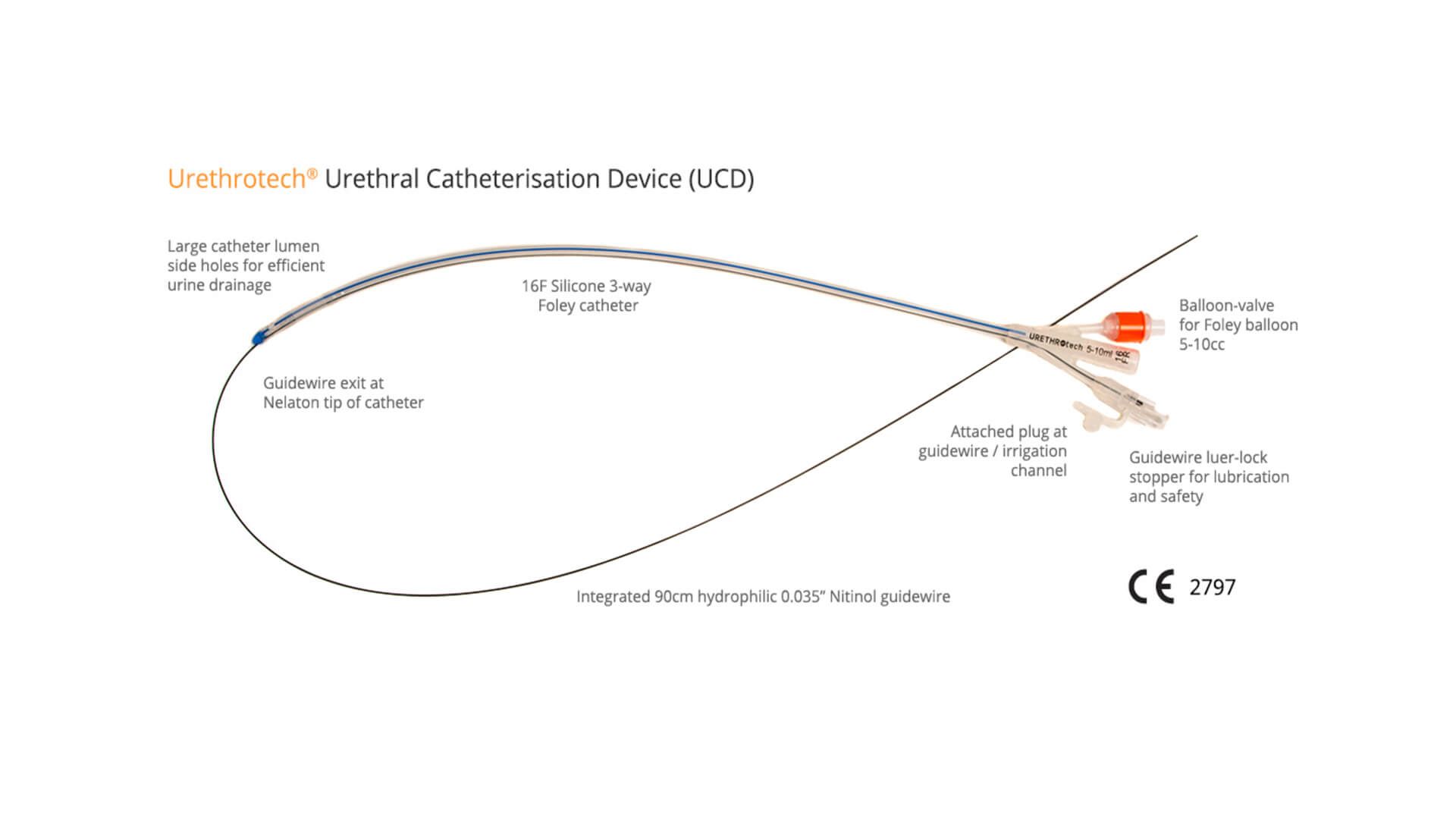Urethral Catheterisation Device (UCD®)
- Simple and ready-to-use
- Safe and Cost-effective
- Purpose designed regulated Medical Device
- Efficient patient care
- can be used by qualified Doctors and Nurses
Prevention of Urethral Injury:
- 15 – 25%of patients admitted to Hospital are catheterised ⁸
- ca. 1 in 14 residents of long-term care facilities have a permanent urinary catheter in place requiring regular change
- ca. 4 Million Foley catheters are used annually in the UK alone
- Urinary catheters are placed most frequently in Emergency Rooms (54%) ⁹
- Prevalence in ICU settings: ca. 60% in the United States, 75% in Taiwan and 76% in Japan ⁹
During their hospital stay, up to 25% of patients require a urethral catheter, with approximately 0.3% sustaining urethral trauma from the insertion of the Foley catheter.
The incidence of catheterisation-associated urethral injury (CAUI) is:
- 0.7 /1,000 adult male hospital admissions ²
- 3.2 – 13.4/1,000 men who need a catheter ² ³
- 9.5% of men undergoing cardiac surgery ⁴
Complications from CAUI include:
- 81% sustain Clavien-Dindo grade 2 or greater complication ⁷, among which:
- 40% develop urosepsis ⁷
- 5% die from complications related to urosepsis ³
- 78% suffer from long-term urethral stricture ³
- The average cost to treat CAUI is about £7,285.00 (€8,500.00) per case, which amounts to £278,850 (€335,377) over 6 months at two teaching hospitals ⁷, with an extrapolated NHS healthcare burden of £215 million per year.
- Additional costs to manage long-term complications of urethral strictures ⁷
- Potential medico-legal costs ¹⁰
- Across a single hospital, 81% of men were successfully catheterised with the Urethrotech UCD® after failed standard Foley-catheterisation ¹¹
- CAUI in men undergoing Cardiac Surgery may be preventable with the Urethrotech UCD® ⁴
- Urology Nurses can solve difficult catheterisation independently and avoid patient care delay ¹²
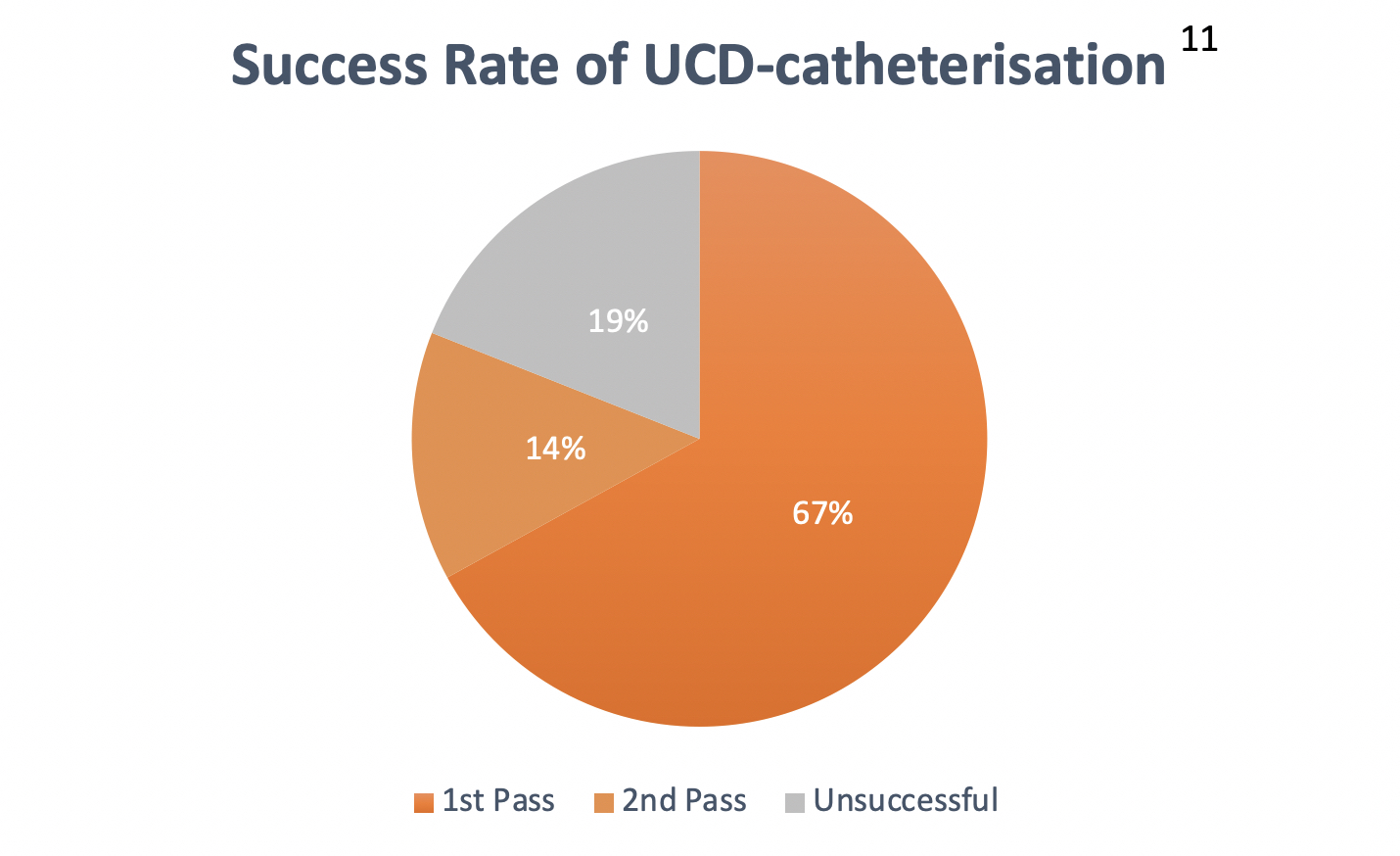
Utilisation and success rate of Urethrotech UCD® in a 530-bedded Community Hospital ¹¹:
- Managing failed standard catheterisation with the Urethrotech UCD® was time and cost effective and resulted in successful urethral catheter placement in 81% of patients.
- In 4 men, mild urethral bleeding was recorded as the result of standard Foley-catheterisation that did not interfere with UCD-catheterisation.
- All staff were highly satisfied with the new device and would use it again as the next step to solve difficult urethral catheterisation.
[1] Urethrotech UCD for difficult or failed catheterisation. Medtech innovation briefing. Published: 7 August 2017. Available from: nice.org.uk/guidance/mib116
[2] Kashefi C, Messer K, Barden R, Sexton C, Parsons JK. Incidence and prevention of iatrogenic urethral injuries. J Urol 2008;179(6):2254–22.
[3] Davis NF, Bhatt NR, MacCraith E, Flood H, Mooney R, Leonard G, Walsh MT. Long-term outcomes of urethral catheterisation injuries: a prospective multi-institutional study. World J Urol. 2020;38(2):473–480.
[4] Bugeja S, Mistry K, Yim IHW, Tamimi A, Roberts N, Mundy AR. A new urethral catheterisation device (UCD) to manage difficult urethral catheterisation.World J Urol. 2019;37(4):595-600.
[5] Thomas AZ, Giri SK, Meagher D, Creagh T. Avoidable iatrogenic complications of urethral catheterisation and inadequate intern training in a tertiary-care teaching hospital. BJU Int 2009; 104(8):1109–1112.
[6] Bacsu C, Van Zyl S, Rourke KF. A prospective analysis of consultation for difficult urinary catheter insertion at tertiary care centres in Northern Alberta. Can Urol Assoc J 2013; 7(9–10):343–347.
[7] Davis NF, Quinlan MR, Bhatt NR, Browne C, MacCraith E, Manecksha R, Walsh MT, Thornhill JA, Mulvin D. Incidence, cost, complications and clinical outcomes of iatrogenic urethral catheterization injuries: a prospective multi-institutional study. J Urol. 2016;196(5):1473-1477.
[8] Guideline for Prevention of Catheter-Associated Urinary Tract Infections (2009). Available from: https://www.cdc.gov/
[9] Kuriyama A, Takada T, Irie H, Sakuraya M, Katayama K, Kawakami D, Iwasaki H, Fowler K, Tokuda Y, Saint S. Prevalence and Appropriateness of Urinary Catheters in Japanese Intensive Care Units: Results From a Multicenter Point Prevalence Study. CID 2017; 64 (2): S127–S130.
[10] Awad MA, Ostenberg EC, Chang H, Gaither TW, Alwaal A, Fox R, Breyer BN. Urethral catheters and medical malpractice: a legal database review from 1965 to 2015. Transl Androl Urol 2016; 5(5):762–773.
[11] Fluckiger S, John H. A new Urethral Catheterisation Device for safe urethral catheterisation in difficult cases. J Clin Urol. 2019;12(83).
[12] Dragova M, Bamfo A, Holmes K, Attard K, Frost A, Mundy A. Managing difficult catheterisation in nurse-led catheterisation services: Does guidewire-assisted urethral catheterisation make a difference? Int J Urol Nurs. 2020;1–7.

Patient Experience
Urology Nurse Specialist shares the problems her patients encounter when difficult catheterisation occurs.
Clinical Need & Solution
Catheterisation-associated Urethral Injury (CAUI) is preventable.
“Urethral Catheterisation is one of the most common invasive medical procedures. About time that we prevent procedure related complications!”
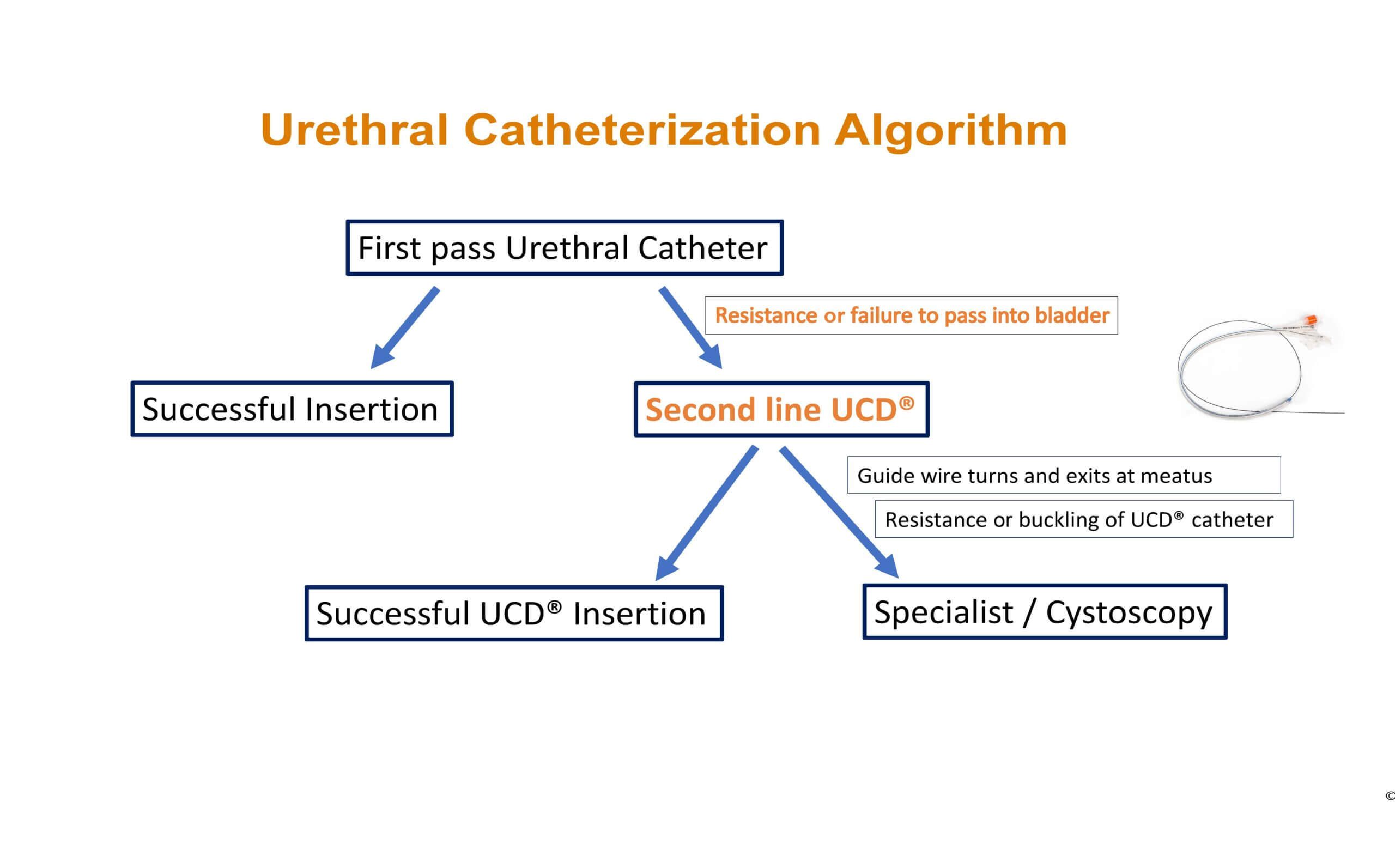
Rational Resource Allocation
Instruction for Use
Please watch this Instruction for Use video and learn about indications and contraindications of the Urethrotech UCD®
Further questions?

